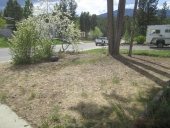
 5
5





 7
7




How Permies works: https://permies.com/wiki/34193/permies-works-links-threads
My projects on Skye: The tree field, Growing and landracing, perennial polycultures, "Don't dream it - be it! "
 2
2




 2
2




 7
7




Invasive plants are Earth's way of insisting we notice her medicines. Stephen Herrod Buhner
Everyone learns what works by learning what doesn't work. Stephen Herrod Buhner
 4
4




 2
2




Casie Becker wrote:Where are you in general terms? ...
Maybe you can work with your children to plant a garden that they can incorporate into their snow fort. We always put our entrance by a thorny tree because we thought it would keep the adults and bigger kids out.
 4
4








Where there is Liberty, there is Christ!
 1
1





 3
3




 3
3




 6
6




 4
4




 3
3





|
Who among you feels worthy enough to be my best friend? Test 1 is to read this tiny ad:
The new purple deck of permaculture playing cards
https://www.kickstarter.com/projects/paulwheaton/garden-cards
|





